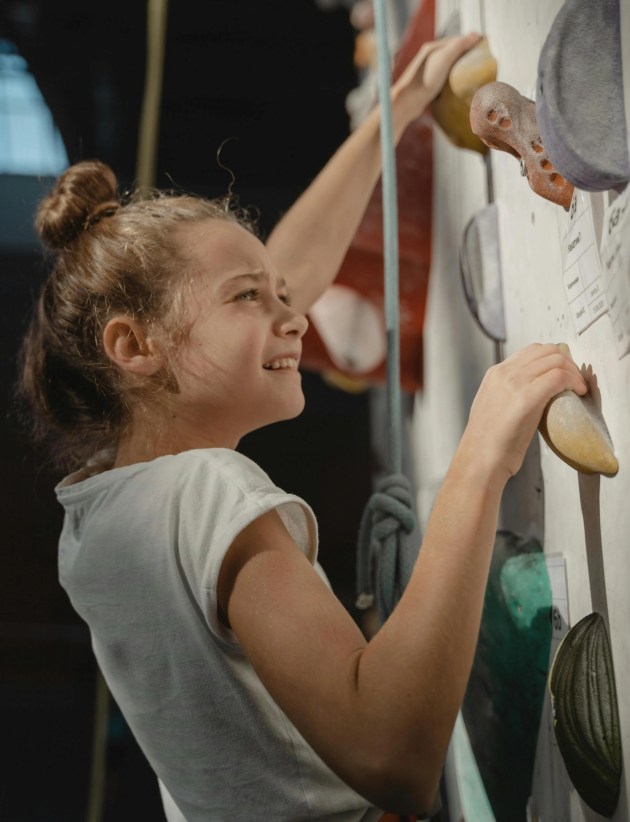
“Bzzz,” the French teacher buzzes.
“Bzzz,” she sounds again, reaching her hand into a brown cloth bag. Toddlers of various ages are wiggling in their plastic seats. One little girl reaches her hand out as the teacher shows her students a stuffed bee.
“L’abeille!” the teacher exclaims in at a singsong pitch. “L’abeille!”
The teacher hands the stuffed animal to the little girl as she smiles and claps. “Oui, Nora! Bravo!”
The activities at this particular French for Tots class are one example of how the Language Workshop for Children (LWFC) excites its young students as it educates them. Founded in 1973 by François Thibaut, the school—with locations on the Upper East Side, in Manhasset, and in New Jersey—is an innovative resource for babies to learn French, Spanish, Italian, and Chinese, especially thanks to its use of the ground-breaking Thibaut Technique.
“When I started 40 years ago, I had to do a lot of research,” Thibaut, who came up with his very own methods of language instruction, says. “So I tested groups where [the students] seemed to do nearly the exact same thing using the exact same material. And then I realized that six months later, when they were tested, one group could remember about 80 percent of what they had learned, and the other group less than 40 percent of what they had learned.”
So Thibaut asked himself: “What makes one child remember while the other forgets?” The answer lies in the subtleties. He demonstrates. After digging through a bin of stuffed animals, Thibaut emerges with a puppet on his right hand.
“Suppose you present this to the children,” he says. “And you say: ‘The cat.’” His voice is even and void of his natural, affable personality. “They are going to, especially if they are very young, get bored.”
He strides to the door, and puts his puppet hand behind his back.
“If you surprise them…if you come from behind the door,” Thibaut offers, as he shifts his demeanor. He mimes looking at children sitting on the floor as his voice takes on a pleasant, animated lilt.
“Ohh, what do I have? What is it? What do I have?” Thibaut searches the room left and right, the stuffed animal still hidden behind his back, showcasing his effortless way of interacting with young language learners. “Meow! Ohh, is it a cat?”
This element of surprise is one of the ways Thibaut has learned to engage children educationally—and it’s an essential piece in his patented Thibaut Technique. He often stresses that the link between emotion and memory is the key to a child learning material instead of forgetting it.

“The more children are engaged, the more likely they are to retain a language,” Thibaut says. “You engage children in different ways depending on the age. With these little ones, you can engage them with your voice, with the gestures, with the way you look at them.”
Thibaut often uses his classic wax analogy to explain how immersing toddlers in this technique is effective. He explains that a baby’s brain is like warm, malleable wax. It is easily imprinted. The younger a child begins to learn a language, the more information she will retain. As kids become older however, the wax begins to cool down and become stiff, and after a certain amount of time, the Thibaut Technique will no longer be effective.
“Now, people are well aware that the younger the child, the easier it is to learn a language,” he says. “However, most people do not understand the difference between teaching adults and teaching children.”
While the toddlers enrolled at the LWFC could naturally pick up on the structure of a language just by becoming familiar with it, adults could only learn grammar if they were taught specifically how to use it.
“The difference is that adults, you have to teach them the rules, and they apply the rules in order to build sentences,” Thibaut says. “With young kids, you don’t have to explain anything. You give them a certain number of facts, and they will find, by themselves, the rules.”
However, according to Thibaut, having unrealistic expectations for a kid is one of the worst things parents can do during the learning process.
“Children are like computers without printers.” Thibaut says. “They absorb a lot of things, but they [won’t] be able to express that [until] much, much later. So some parents, don’t really understand this [and] put a lot of pressure on their child.”
One of the most prominent of the LWFC’s programs is Languages for Tots, a 45-minute class for students ages 6 months to 3 years. These sessions incorporate the Thibaut Technique for mixed ages, while also providing material for every type of learner. As Thibaut likes to point out, they have “the movers,” “the lookers,” and “the listeners,” so time is spent with both active play (think fun with parachutes and plenty of movement) and seated portions (brief vocabulary lessons with flash cards or stuffed animals).
The LWFC also provides a Family Preschool, a 90-minute class that follows a similar structure to Languages for Tots but incorporates snack time, arts and crafts, and games for ages 20 months to 3 years; afterschool or weekend classes for ages 3-8; and a regular preschool, which meets once or twice a week for ages 2.10 to under 4, and follows American standards for preschools in the target language.
Thibaut says that only about 10 percent of his students have parents who speak the target language at home, and the other 90 percent have virtually no outside exposure. For this reason, in all divisions, children also take home a CD with the classroom songs and a storybook to help reinforce what they learn at the school. Some students also receive a copy of “Professor Toto,” an award-winning animation created by Thibaut that is offered in French, Spanish, Italian, German, Chinese, and English for children ages 2-8.
In addition to their signature language classes, the LWFC will also start to offer Kids MusicRound classes in their Manhattan location in September (the center currently offers these classes, which are for ages 0-4, in their Manhassett location).
Like LWFC, Kids MusicRound is a similarly innovative program that focuses on teaching music to babies.
“I wanted to offer music classes a long time ago because of my belief that music is important for children,” Thibaut says. “However, I am not a musician. And because I’m not a musician, I looked into it. I was looking for the best possible program to offer music classes to babies and young children.”
After much thorough searching, the LFCW hired Alicia Aubin, a talented trombonist, to head the music programs.
“They’re getting a very full education. We’re not just doing ‘Old McDonald,’ you know,” Aubin says. “We’re really touching on a lot of different elements of music that they wouldn’t necessarily hear even on the radio.”
In the long run, LWFC plans to offer a wider selection of these Kids MusicRound classes to more ages, and may eventually incorporate specific instrument sessions, like guitar lessons, into the programming.
Aubin describes the classes as very interactive, teaching tots beat comprehension, pitch, and melody, and says that so far the responses from parents in Manhassett have been very positive.
“I had always thought that music was sort of a universal language,” she says. “It can touch every single person, no matter what you actually speak.”





















